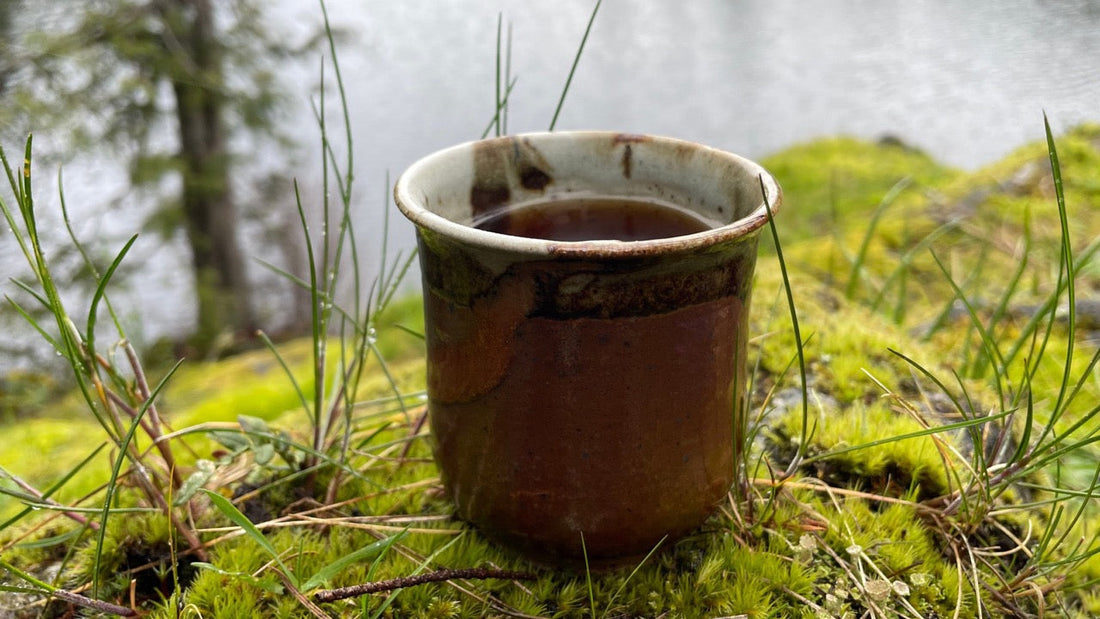No. 41 - The Forest Is Waking Up—And So Is Your Tea Ritual
Share
With spring now fully underway, I find myself pulled between the rhythm of daily tasks and the wild call of the forest trails. The work still waits—always—but this week reminded me that taking a moment to pause, breathe, and sip tea by the lake is its own kind of nourishment. So, let’s walk gently into the season together and consider: how might we awaken our rituals alongside the world around us?
Spring Awakens on the West Coast
Spring has finally arrived, and the tree branches outside the shop window have moved from tiny buds to leaves dotted with delicate yellow flowers. Azaleas across the street have come and gone, and the cherry trees lining my drive home grow more beautiful by the day. While I extend my sympathies to those still in winter's grip elsewhere in Canada and beyond, here on the West Coast, “second spring” is in full swing (and I do mean swing – yesterday 21°C, today 12°C, and who knows about tomorrow!).
For me, spring also marks the beginning of hiking season. Although we get out a bit through winter – walking the dog around Thetis Lake and the trails next to the house – I gravitate more to my heated yoga room than to the top of Lone Tree Hill when the temperatures are under 5°C. But up over 8°C, and the outdoor adventures become more inviting, even if they do still require waterproof footwear.
Today’s trail hike was lined with snowdrops, alive with birdsong, and vibrantly green. The forest smells different, feels different – fresh and alive as it wakens from its slumber. I’ve taken to hiking with a thermos and small cup of tea, realizing that the journey is all the more beautiful when we take time to pause and drink in the quietude. This morning, that was lake-side with a little First Light and many deep, rejuvenating breaths. I could almost feel my neural pathways blooming like so many spring flowers.
There have been thousands of research papers on the effects of nature exposure on our physical, mental, social and emotional well-being. According to A Brief History of Forest Bathing (did you know there is a Forest History Institute?! I love this so much), Mr. Tomohide Akiyama of the Japanese Ministry of Agriculture, Forestry, and Fisheries coined the term Shinrin-yoku in 1982. It is comprised of three characters: the first is three trees meaning ‘forest’ (森), the second two trees inferring interconnectedness (林), and the third bath (浴) to connote “the luxury of being fully engulfed in the abundance that surrounds you.” This beautifully links to the concept of wabi-sabi – appreciating beauty in the imperfect and impermanent – in which the Japanese tea ceremony is grounded. Forest bathing and tea are both beautiful, why not take them together? I think we’re onto something…
Spring Cleaning for Your Tea Collection
But it’s not all forests and tea in the spring, is it? No, it’s time to spruce things up and clear out the cobwebs from the space under the bed. But what about your tea collection? Is it time to give it a refresh as well? While tea doesn’t go ‘bad’ (unless it gets wet, then all bets are off), as with the spice cupboard, it will lose its potency and flavour over time. How to tell? Give it a smell – if it doesn’t smell like anything, likely it won’t taste like much either.
What can you do with those teas that have languished in the back of the drawer behind the tea ball with the broken chain? Consider these ideas:
- Steep chai and similarly spiced teas as flavourful alternatives to water when making oatmeal (versions without black tea like Sumitra’s Chai can be steeped for 30 minutes or more to extract all the flavour and anti-inflammatory benefits)
- Cold-infuse green tea in fresh water for 12–24 hours, then use it to poach fish for a subtle flavour boost
- Transform stale jasmine tea into an aromatic rice dish – steep the tea first and then use in place of plain water
- Nourish your houseplants—orchids particularly benefit from black tea, and rooibos can be worked into the soil to provide additional water retention
- Don’t forget about your outdoor pots – work tea leaves into your potting soil to improve water retention and provide nutrients to those beautiful blooms
From your spent tea, new growth will emerge—a perfect embodiment of spring's renewal.
Have creative uses for old or spent tea? Share it with the communi(tea) in the comments or tag us on social @islandelixir.
One more thing...
hidden trail
deep in the woods
flowers only I know
-Stephanie Davis, Kokako 17
Until next time,
Steep Calm,
Bree

